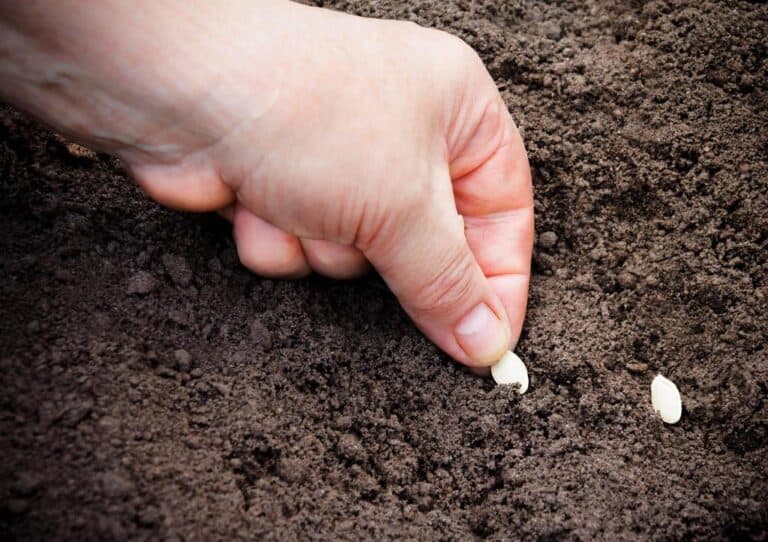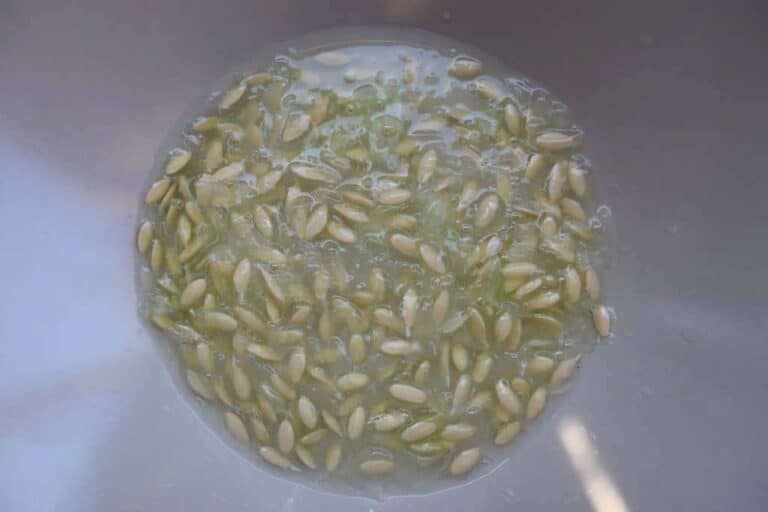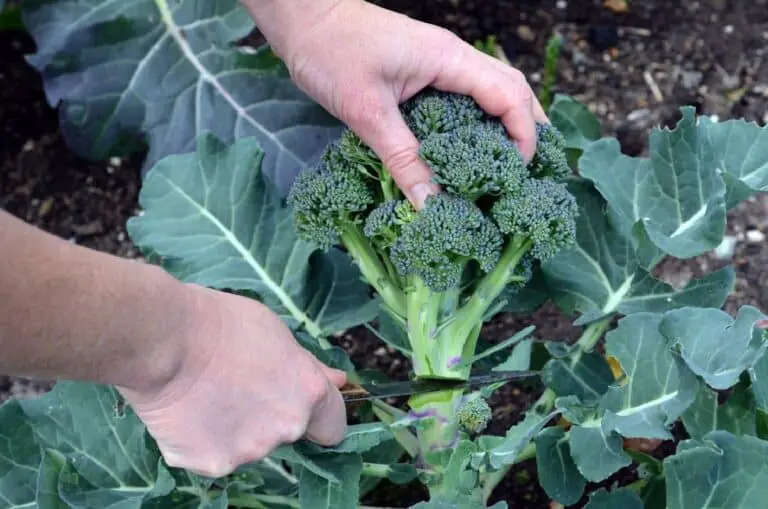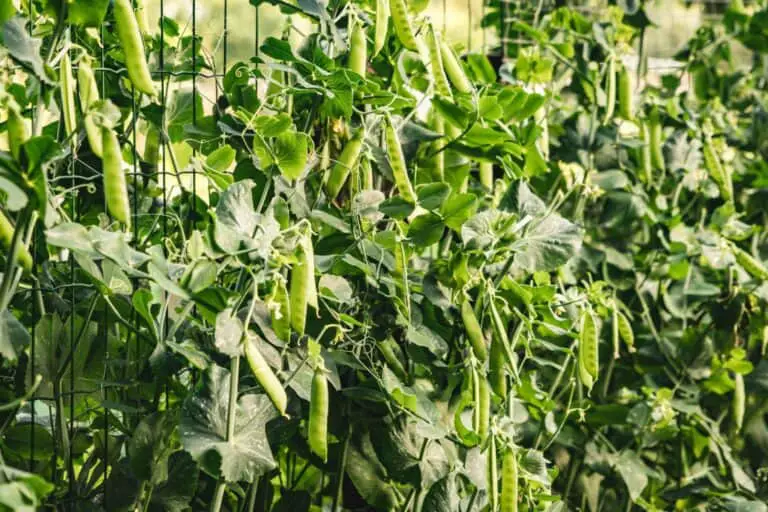Are Meyer Lemons Self Pollinating? How to Hand-Pollinate Meyer Lemons Plant
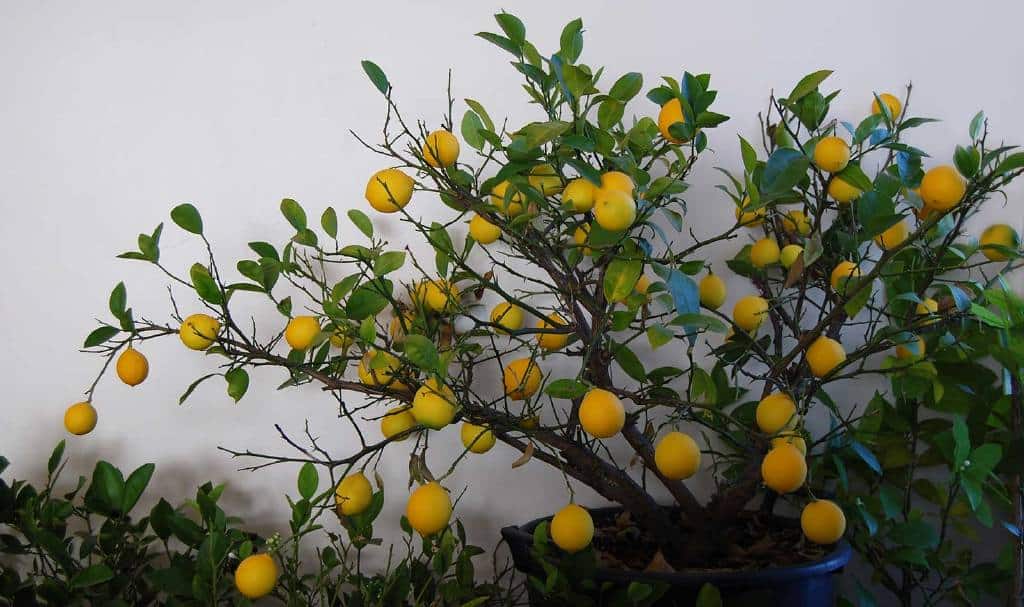
Ever found yourself wondering about the secret life of your Meyer lemon tree? I sure have. Meyer lemons, known for their sweet and tangy flavor, are a great addition to any garden. The allure of those sweet, tangy fruits dangling from the branches is hard to resist.
But here’s the million-dollar question: Are Meyer lemons self-pollinating wizards, or do they need a little help from us? Meyer lemon trees are self-pollinating, which means they don’t require a second tree to produce fruit.
In this journey through the citrus groves, we’re going to unravel the mysteries of Meyer lemon pollination. Prepare to explore the citrus world, where trees share stories of blooming romance and we play matchmakers for lemons.
Get ready to put on your gardening gloves because we’re about to dive into the interesting world of Meyer lemon pollination. We’ll discover the careful process of hand-pollination to guarantee a delicious citrus harvest.
Understanding Meyer Lemons

Meyer lemons, a hybrid citrus fruit believed to be a cross between a lemon and a mandarin or orange, are not your average lemon. These lemons have a special taste that is both sweet and tart, making them great for any dish.
Unlike regular lemons, you will find Meyer lemons have thinner skin and a more floral aroma, adding an extra layer of complexity to their appeal.
Characteristics of Meyer Lemon Trees
- Hardiness: Meyer Lemon trees are hardy, making them suitable for various climates.
- Leaf Aroma: The leaves of Meyer Lemon trees release a delightful, citrusy aroma.
- Growth Form: They typically grow as shrubs or small trees, reaching a moderate height.
- Fruit: Meyer Lemons are smaller and rounder than traditional lemons, with a thin, smooth, and deep yellow to orange peel.
Life Cycle and Growth Stages
Moving through the life cycle, Meyer Lemon trees undergo several growth stages. Beginning as a seed, they progress through germination, seedling, juvenile, and adult phases. The onset of flowering, changes in size, and leaf structure all indicate the tree’s development.
- Germination: The process starts with the emergence of a seedling from the seed.
- Seedling: Young trees develop their first leaves and exhibit initial growth.
- Juvenile: The tree grows taller, and its characteristic features become more pronounced.
- Adult: Mature trees bear fruit, and the cycle continues through pollination and seed formation.
The Role of Meyer Lemons Flowers and Pollinators in Reproduction
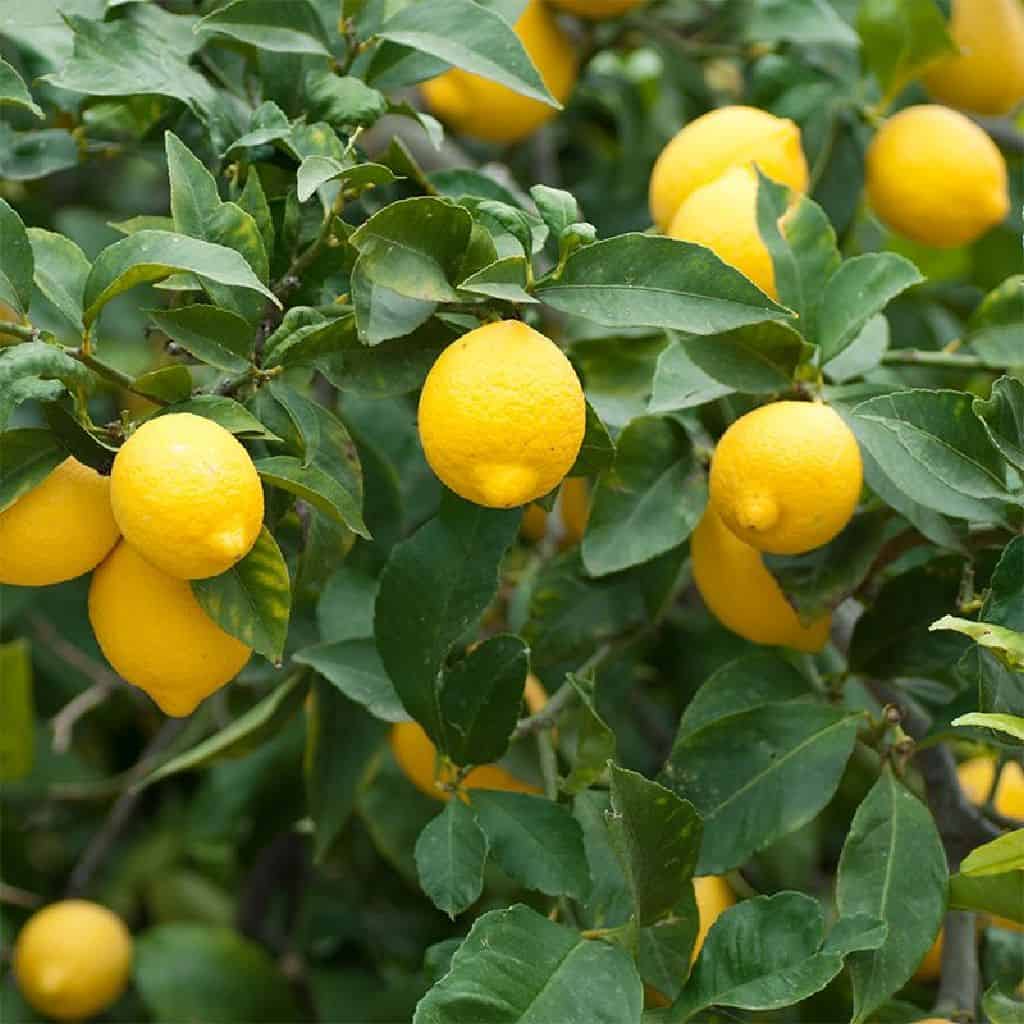
Meyer Lemon flowers are not just ornamental; they play a vital role in the reproduction process. Their structure is finely tuned to facilitate pollination, a crucial step in the journey from bloom to fruit. Let’s delve into the elements that make these flowers the architects of Meyer Lemon reproduction.
Components of Meyer Lemon Flowers
- Pistil: The female reproductive organ, encompassing the stigma, style, and ovary.
- Stamen: The male counterpart, housing the anther and filament.
- Petals: Vibrant and alluring, serving as a visual cue for pollinators.
- Sepals: Protective layers, guarding the delicate inner bud.
The Role of Pollinators
Pollinators are vital for the survival of many plant species, like Meyer lemons. They help with reproduction. Bees, butterflies, birds, and other insects and animals play a vital role in transferring pollen from one flower to another, facilitating fertilization.
Due to habitat loss and pesticide use, pollinator populations are declining. As a result, hand-pollination techniques are now crucial for a successful fruit yield.
The Pollination Process
- Natural Pollination: Meyer Lemon flowers are designed to attract bees and other pollinators, utilizing nectar as a sweet incentive.
- Wind and Insects: These agents aid in transferring pollen from the anther to the stigma, initiating the fertilization process.
Fruit Set and Beyond
Once pollination occurs, the ovary transforms into a fruit, marking the beginning of Meyer Lemon development. The flower does more than just pollinate; it also shapes the tasty fruits that come later.
You should know that this delicate process helps us understand the special connection between Meyer Lemon flowers and the plentiful harvest they produce.
Are Meyer Lemons Self Pollinating?
The answer lies in understanding the unique reproductive biology of these citrus trees. While Meyer lemon trees have the ability to self-pollinate to some extent, they generally benefit from cross-pollination to ensure optimal fruit production.
Cross-pollination happens when pollen moves from one flower to another on a different tree. This helps the fruit grow stronger and increases the amount they produce. Beneficial insects like bees or manual hand-pollination can facilitate this process.
Growers can transfer pollen from one bloom to another using a brush or cotton swab. This helps fertilization and fruit development. Gardeners can improve their Meyer lemon harvests by learning about its pollination process.
Factors Affecting Pollination of Meyer Lemon
Meyer lemon trees, like many citrus varieties, possess the ability to self-pollinate to some extent. However, relying solely on self-pollination may not guarantee optimal fruit production. To grow a healthy Meyer lemon orchard, it’s important to know how citrus trees are pollinated.
Several factors influence Meyer lemon pollination:
- Climate: Meyer lemon trees thrive in warm climates, and a consistent temperature range of70–85°FF (21-29°C) is ideal for pollination.
- Insects: Bees and other pollinators play a vital role in transferring pollen between flowers, enhancing the chances of successful pollination.
- Tree Health: Healthy trees are more likely to produce an abundance of flowers and fruit. Adequate watering, proper nutrition, and disease management contribute to overall tree health.
How to Hand-Pollinate Meyer Lemons Plant
For those looking to take a proactive approach to pollination, hand-pollination is a valuable technique. You can use this method to control and improve pollination, especially when there are few natural pollinators.
Steps for Hand-Pollination
Step 1. Identify Flowering Stage
Meyer lemon flowers have different stages. The best time to hand-pollinate is when the flowers are fully open and receptive.
Step 2. Gather Pollen
Gently collect pollen from the stamens of open flowers using a small brush or cotton swab. Be cautious not to damage the delicate structures of the flower.
Step 3. Transfer Pollen
Carefully transfer the collected pollen to the stigma of another flower. This mimics the natural transfer of pollen by bees or other insects.
Step 4. Repeat the Process
Continue hand-pollination across various flowers to increase the chances of successful fertilization.
Related: Are Tomatillos Self Pollinating? How to Hand-Pollinate Tomatillos Plant
Benefits of Hand-Pollination of Meyer Lemons
As mentioned earlier, you can hand-pollinate Meyer Lemons to help with natural cross-pollination. It will come with several benefits for you to do so.
- Enhanced Control: Hand-pollination allows you to control the timing and distribution of pollen, ensuring efficient fertilization.
- Increased Yield: By actively participating in the pollination process, you can significantly increase the number of fruits your Meyer lemon tree produces.
- Diversity in Genetics: Hand-pollination gives you the power to mix and match the genetic traits of different Meyer lemon trees. Think of it as a genetic potluck, introducing diversity that can lead to heartier trees and more resilient fruit.
- Optimized Resource Utilization: Hand-pollination directs the energy of your Meyer lemon tree precisely where it’s needed. No more wasted efforts on unproductive flowers. It’s a strategic allocation of resources, ensuring that each blossom contributes to the delicious yield you crave.
- Controlled Cross-Pollination: Ever played matchmaker for your Meyer lemon blossoms? Hand-pollination allows you to facilitate a controlled cross-pollination party, encouraging different trees to mingle and exchange genetic material. The result? A harmonious blend of flavors in your Meyer lemons.
- Faster Results: Nature has its pace, but with hand-pollination, you’re putting your gardening project on the fast track. Achieve quicker and more reliable results by transforming your Meyer lemon tree into a productive powerhouse.
- Adaptability to Weather Conditions: Unpredictable weather throwing a curveball at your citrus dreams? Hand-pollination provides a buffer against adverse weather conditions, ensuring that your Meyer lemon tree can still bear fruit even when the elements are less than cooperative.
Whether you like gardening or love pairing lemons, hand-pollinating Meyer lemons has many benefits.
Conclusion
In conclusion, Meyer lemon trees can pollinate themselves, but hand-pollination is better for a larger harvest. To succeed with your Meyer lemon orchard, learn about pollination and take action accordingly. Whether you rely on nature’s pollinators or lend a helping hand, the reward is a bountiful supply of these delectable citrus fruits. Happy gardening!
FAQs
How do I know if my Meyer Lemon tree needs hand-pollination?
Signs of poor pollination include low fruit set, dropped flowers, and misshapen fruit. If you see these problems, you might want to try hand-pollination to speed up the reproduction process.
When is the best time to hand-pollinate Meyer Lemons?
Hand-pollination is most effective during the flowering stage. Perform this task when the flowers are open and the pollen is viable. Early morning is often recommended for hand-pollination.
Can Meyer lemons be grown indoors, and do they require hand-pollination?
Yes, Meyer lemons can thrive indoors, but since indoor environments lack natural pollinators, hand-pollination is often necessary. It ensures proper Meyer lemon pollination and promotes fruit set.
Are there specific Citrus tree varieties that can assist in Meyer lemon pollination?
Yes, planting compatible Citrus varieties nearby can enhance natural pollination for Meyer lemons. Cross-pollination with other citrus trees can positively influence Meyer lemon fruit set.
How does environmental factors like temperature affect self-pollination in Meyer lemons?
Temperature plays a significant role in Meyer lemon pollination. Extreme temperatures can affect the viability of pollen and, subsequently, the success of self-pollination. Ideal conditions promote better self-pollination.
Is there a risk of over-pollination when hand-pollinating Meyer Lemon trees?
Yes, over-pollination can lead to excessive fruit drop. It’s important to strike a balance when hand-pollinating Meyer lemons to avoid disrupting the natural pollination process and negatively impacting fruit set.
Can I use natural pollination exclusively for Meyer lemon fruit production, or is hand-pollination essential?
Meyer lemons can pollinate on their own, but it’s better to hand-pollinate for more fruit, especially where pollinators are scarce. It ensures a higher chance of successful Meyer lemon fruit production.

